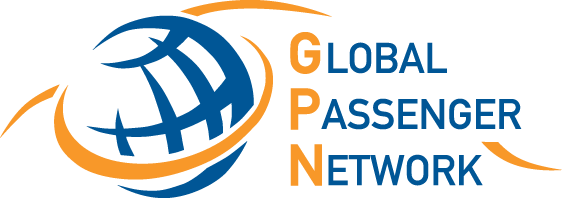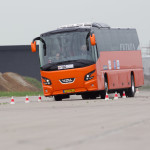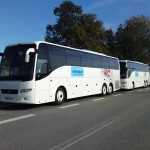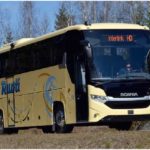The new generation of Irizar brand complete buses, adapted to the new Euro VI regulation, is now available
The work to adapt Irizar’s complete buses to the new regulation that will enter into force in the near future (January 2014) has not only been focused on integrating the Euro VI engines. In fact, the efforts have been aimed at expanding and optimising fundamental concepts such as safety, consumption and weight. The result: a new generation of complete buses.
If the success of the Euro V complete buses is already a reality proven by the operators that currently use this type of vehicle in eight European countries, as well as by the numerous driving tests that have been performed, we continue to add improvements and new features to ensure we always offer the best products.
The large amount of valuable information gathered throughout these years of experience, the knowledge obtained, the data provided by our partners as well as from our own tests, in addition to the Euro VI project, are without a doubt the key factors for equipping the new generation of vehicles with optimal handling features, driving performance, low consumption, safety and reliability.
Although the number and weight of the engine as well as the cooling and exhaust systems are greater than in the Euro VI, we have minimised the impact on the vehicle’s total weight by maintaining current levels while improving its distribution and moving the front axle. Fuel consumption is also kept at optimal levels, achieving one of the best ratios on the market. Comfort has been improved by reducing vibrations and noise levels, while improving the balance of the coach’s road performance. The improvements also address the location and accessibility of certain parts.
As far as active safety, the addition of ACC, LDW and DFD are also worth mentioning. A new generation diagnostic tool that allows remote connections via SIM or WIFI has also been incorporated.
The new generation of Euro VI coaches includes the Irizar PB, Irizar i6 and Irizar i4 coach models. We have decided to continue collaborating with PACCAR-DAF, ZF and VDO CONTINENTAL as the primary strategic partners of the project, and we are also continuing with our expansion in the markets we consider most strategic.
New accelerated durability tests, equivalent to travelling 1.5 million kilometres, are currently being carried out at the facilities of IDIADA Applus+, one of the most prestigious institutes on an international level, with optimal results.
Durability tests
An accelerated fatigue track is used to simulate the accumulated kilometres equivalent to the entire life of a vehicle, for both structural components as well as coach elements.
The elements used in the tests carried out at the IDIADA tracks include:
Belgian cobblestones: These create an elevated frequency of high vertical stresses that affect the vehicle’s suspension systems and structure.
Flat cobblestones and undulated surfaces: Allows the driver to detect internal noises in the passenger area of the coach and helps assess the comfort level inside the vehicle.
Stretch of curves and water tracks with potholes: With river stones attached to a concrete base that produce sudden impacts that create specific vertical and horizontal stresses of various magnitudes, as well as a lateral acceleration on the vehicle.
Gravel surface: Makes it possible to view the intrusion of dust in the various compartments.
Water wades: Aside from cooling the temperature of the vehicle’s shock absorbers, this is also useful for detecting possible water leaks inside the vehicle as well as corrosion of the components in the vehicle’s undercarriage.
Dynamic platform: This is a flat surface for manoeuvres that produce lateral accelerations in order to simulate lateral stresses during the coach’s life. It allows assessing its dynamic behaviour.
PACCAR-DAF Euro 6. MX11, MX13 ENGINES
NEW GENERATION OF 11 and 13 liter ENGINES
COACH SEGMENT – IRIZAR integral i6 and PB
MX11 271, 271kw/369 hp (1.650 rpm), 1.600 Nm(1.000 – 1.650 rpm), i6.
MX11 291, 291kw/396 hp (1.450-1.700 rpm), 1.900 Nm(1.000 – 1.450 rpm ), i6.
MX11 320, 320kw/435 hp (1.450-1.700 rpm), 2.100 Nm(1.000 – 1.450 rpm), i6, P.B.
MX13 340, 340kw/460 hp (1.425-1.750 rpm), 2.300 Nm(1.000 – 1.425 rpm), i6, P.B.
Combined with ZF ASTRONIC 12s or ZF ECOLIFE(only MX11) gear boxes
INTERCITY SEGMENT – IRIZAR Integral i4
MX11 240, 240kw/326 hp (1.650 rpm), 1.400 Nm(1.000 – 1.650 rpm), i4
MX11 271, 271kw/369 hp (1.650 rpm), 1.600 Nm(1.000 – 1.650 rpm), i4, i6(only U.K.)
MX11 291, 291kw/396 hp (1.450-1.700 rpm), 1.900 Nm(1.000 – 1.450 rpm), i4, i6
Combined with ZF ASTRONIC 12s o ZF ECOLIFE gear boxes
• MX11 general overview
− The MX11 engine is a completely new design.
− This engine will be a 6-cylinder in line engine with 10.8 litre capacity.
− It will have a new generation of high pressure common rail injection system with advanced electronic control.
− It will also have typically a DEB de-compression brake system and will carry all types of engine PTO’s.
• MX13 general overview
− The MX13 engine is the replacement and evolution of the MX Euro V
− This engine will be a 6-cylinder in line engine with 12,9 litre capacity.
• MX11 and MX13 overview applied technology
− Compact Graphic Irion (CGI) cylinder block with wet liners
− One piece CGI cylinder head fit for cylinder pressures up to 220MPa and carrying two camshafts.
− Timing gears at the flywheel side of the engine.
− Common rail fuel injection with block integrated High Pressure unit pumps with pressures between 900 and 2500 bar.
− Electronic controlled single stage (VTG) Variable Geometry Turbine turbo charging system.
− SCR and DPF exhaust after treatment system together with cooled EGR technology.
− DEB (optional) de-compression brake with enhances braking power due to VGT turbo.
− Electronically controlled variable water pump.
− Electronically driven Crankcase Ventilation System, Exhaust Regeneration Valve and Brake Positioning Valve.
− This new engine platform is intended to be up-to-date up to the year 2030.
After Sales Requirements
The scope of this project is to develop competitive engines in the market. Following issues are key items to success:
– State of the art Engine for 2013 and the years there after
– Total Cost of Ownership
– Maximum Up Time / Minimum Down Time
– Market conform R&M contract
– High Reliability
– Low number of Faults per Engine
– Optimal Hours to Repair
– Customer Satisfaction





